It is said that Leonardo Da Vinci was five hundred years ahead of his time. Shen Kuo would "outdo" the Renaissance champion in this competition. This brilliant 11th-century Chinese had many talents:he was an inventor, politician, military, scientist, poet ... he could not get along with his wife.
Unusual curiosity about the world and broad interests - this, according to Eric Weiner, author of the book “Genialni. In pursuit of the mystery of genius ”, features of outstanding individuals. This is what Shen Kuo, a Chinese Song scholar, was like. I don't know if the Chinese exchanged business cards back then, but if so, Shen's calling card must have been enormous - writes Weiner. 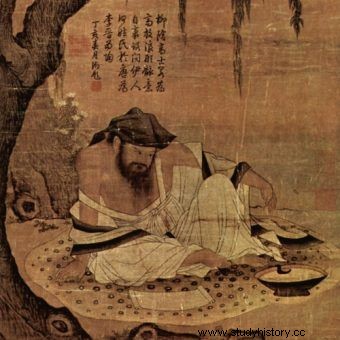
Shen was a mathematician, astronomer, , meteorologist geologist, zoologist, botanist, pharmacologist, agronomist, archaeologist, ethnographer, cartographer, encyclopedist, diplomat, hydromechanical engineer, inventor, university chancellor and minister of finance.
And these were just his official classes! In his spare time, he wrote poetry and composed music - adds the author of "Brilliant ...". Outstanding talents and a desire to gain knowledge led him to the top. Unfortunately, he didn't stay long.
Way to the top
Initially, there were no indications that Shen Kuo would make an outstanding career in the future. The scholar was born in 1031 in Qiantang (now Hangzhou City, Zhejiang Province), into the family of a junior official.
In 1051 he took over the post from his deceased father. His task was to supervise the irrigation system, take care of the patency of the canals, and take appropriate flood prevention measures.
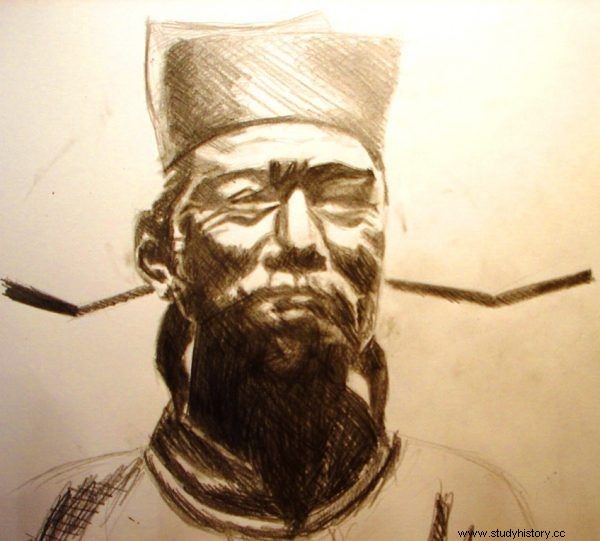
Contemporary artist's image of what Shen Kuo looked like (by Wikimachine, license CC BY-SA 3.0).
However, he did not stop there. Shen decided to move up the ranks of the state administration. He began taking more clerical exams. Eventually, after seven years, in 1063, he attained the highest rank - jinshi .
Later that same year, he was appointed ambassador. He performed his mission in several kingdoms bordering the Middle Kingdom. One of his successes was the signing of a peace treaty with the Liao state.
In the meantime, he was the minister of finance, commanded the army, and was also a chancellor at the prestigious Hanlin Academy. He proved successful in every field, so there was no shortage of new job offers.
In his career, he was helped by a brilliant mind, but also ... slyness. Shen Kuo was often sent "out in the field" by the emperor. One time he came to see the poet and later administrator of Hangzhou Su Shi. During his visit, Shen copied some unflattering poems and reported them to his powerful boss. Informing brought him the favor of the ruler and high state decoration .
Shen Kuo also advised the heir to the throne. As the trustee of the future emperor, he was entrusted with defending the borders against the Qidans of the Liao state. He was successful on the battlefields, titles and praise from the emperor poured out like a sleeve. The Lord wrote Shen letters - 273 in sixteen months!
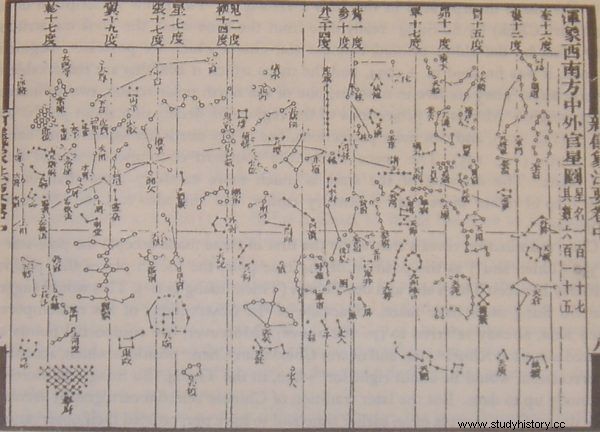
One of Su Song's five star maps, published in 1092, based on Shen Kuo's corrected North Star position (source:public domain).
The crowning achievement of his career, however, was the position of director of the Imperial Astronomical Observatory, which he received from the emperor himself in 1072. During this time, carried out, among other things, a calendar reform, studied the movements of the planets and improved the maps of the sky.
Who is not lucky in love, is looking for it in the stars
Shen Kuo is best known today for describing a compass and explaining the operation of a magnetic needle in 1088 . In Europe, the first mention of a magnetic needle appeared about a hundred years later in Alexander Neckman's "De naturi rerum".
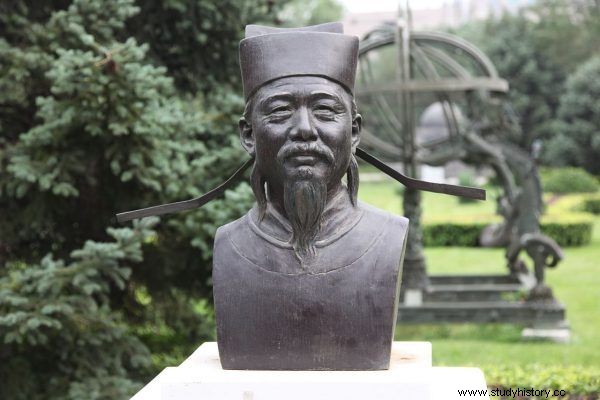
The bust of Shen Kuo placed in the garden of the Beijing Imperial Astronomical Observatory (photo by Hans A. Rosbach; license CC ASA 3.0).
Shen discovered the principles of magnetic declination and introduced the concept of the so-called true north. He noticed the difference in the position of the magnetic pole and the geographic pole of the Earth. He perfected the method of measuring the distance of celestial bodies and measured the distance between the polar star and the true north. And these are just some of his achievements.
However, if you believe the rumors at the time, successes in the political and scientific fields did not translate into a married life. As Eric Weiner says:
Shen may have had a proud academic record, but his personal life was in ruins. He was unhappily married and his wife is said to have beaten him. How many geniuses he redirected his dissatisfaction to work.
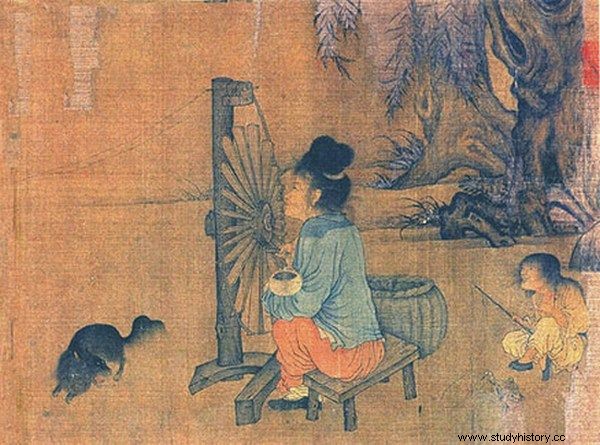
Shen Kuo's wife was reportedly not a very nice woman ... Fragment of a painting by Chinese artist Wang Juzheng (source:public domain).
Supposedly, even the children intervened to defend their father. The wife's aggressive behavior ended with her death, which, however, plunged Shen into grief. They say even tried to drown himself in the Yangtze River.
It may be puzzling why Shen Kuo agreed to such treatment. The mystery is solved when we learn that as an ambassador he married the daughter of a high-ranking official. No wonder the unhappy groom did not want to endanger his powerful father-in-law.
On the other hand, Shen Kuo devoted himself entirely to his passion for exploring the world, which could sometimes clash with the home mire. The scientist was capable of various sacrifices in the name of science.
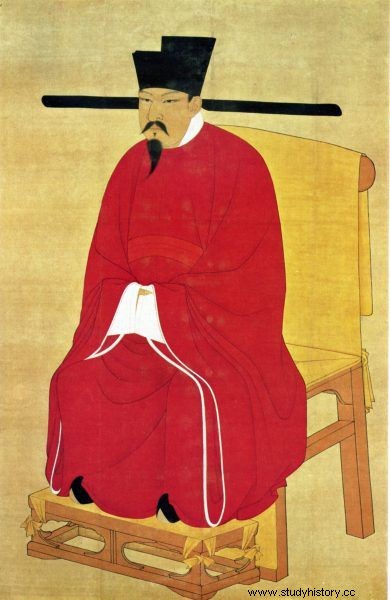
Emperor Shenzong of the Song Dynasty (1067-1085) showered Shen Kuo with praise and titles. One failure was enough to make him forget about his protégé (source:public domain).
For example, in order to compile his tables of planetary motion, would get up three times a night to make the appropriate measurements . This daily, or rather nightly ritual, he cultivated continuously for the entire five years.
Our ambition reaches higher than the sky, but our fate is thinner than paper ...
Shen Kuo's brilliant career collapsed abruptly, and in 1080, a battle ended in success in which the Imperial troops were defeated by the Tanguts of the Xixia state. The blame for the defeat and death of sixty thousand Chinese soldiers was wrongly blamed on Shen Kuo .
The scientist lost all previously held offices and was under house arrest. He spent the rest of his life in his mansion with a gracefully sounding name: Mengqi , that is, "Stream of Dreams". He also died there in 1095. But before that, he wrote down most of his observations in the book "Mengqi Bitan" ("The Dream Stream Brush Conversations").
Inquisitive clerk
We find in it a lot of evidence of the genius of Shen Kuo. One of them was to describe the unusual invention of Bi Sheng. Sheng created movable printing fonts ahead of Gutenberg by four centuries. Shen Kuo praised the work of a contemporary inventor for its efficiency and effectiveness, and rightly predicted it to be a groundbreaking discovery.
The scientist was also a careful observer of nature. He accurately described what was later known as sedimentation. He mentioned in his notes that while the soldiers were crossing the sandy river, suddenly people and equipment began to sink into the quicksand.
His other contribution was describing the climatic and geological processes . Among other things, he noticed that there are fossilized remains of bamboo in rocks in Shaanxi Province. Knowing that this plant is not present in the area at present, he concluded that there had been a lowland here before and the climate must have been humid.
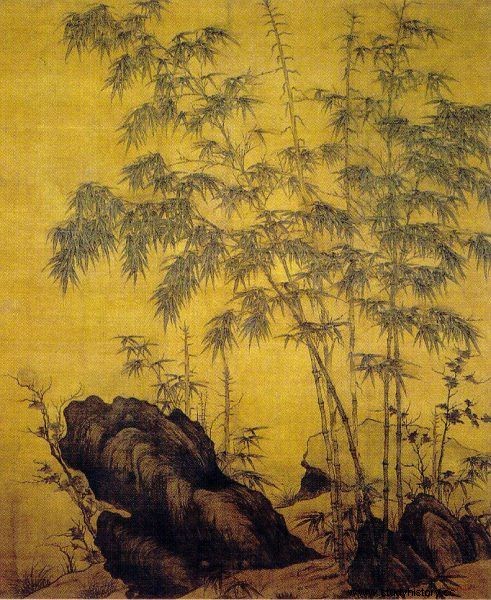
Shen Kuo noticed bamboo fossils in a place where this plant did not exist. He figured this meant that the climate would change over time. The illustration shows the work of the Chinese artist Li Kan (1244-1320) (source:public domain).
He also explained the causes of such natural phenomena as:tides, tornadoes, rainbows, changes in the landscape. He is the author of the first topographic map in the world. He also described the characteristic features and properties of crude oil. He anticipated some of its future uses…
It should not be forgotten that Shen Kuo was also interested in history and calligraphy. The fact that he was a gifted humanist is also evidenced by the fact that "Mengqi Bitan" was read for centuries not only to become familiar with the scientific knowledge contained in it, but because of its interesting and accessible style, pertinent remarks on art and literature and funny anecdotes.
***
The book "Brilliant. In pursuit of the mystery of genius ”is a record of Eric Weiner's journey to places that in history had moments of exceptional heyday and became for a time the center of the development of human thought. The author is puzzled by the question:"What was in the air then - and can it be bottled?"
He is looking for solutions to the "mystery of genius" in Athens, Chinese Hangzhou, Florence, Edinburgh, Vienna, Calcutta and Silicon Valley. He wonders what gives birth to and what attracts a genius, why does it focus in certain places and at certain times, and why does it die, leaving only the memory of the golden age?
Bibliography:
Basic literature:
- Eric Weiner, Brilliant. In pursuit of the mystery of genius , crowd. Ewa Kleszcz, PWN, 2016.
- David S. Kidder, Noah D. Oppenheim, The Intellectual Devotional -Biographies , Rodale, 2010.
- The Encyclopedia of Confucianism , red, Xinzhong Yao, Routledge, New York, 2003.
- Scott L. Montgomery, Alok Kumar, A History of Science in World Cultures:Voices of Knowledge , Routledge, 2015.
- Yinke Deng, Ancient Chinese Inventions , Cambridge University Press, 2011.
Auxiliary Literature:
- A History of Chinese Science and Technology , T.2, eds. Yongxiang Lu, Shanghai Jiao University Press, Springer Berlin Heidelberg, Beijing 2015.
- History of Modern Optics and Optoelectronics Development in China , red, Fuxi Gan, Shouyun Tian, World Scientific, World Century, 2014.
- The Mathematics of Egypt, Mesopotamia, China, India, and Islam:A Sourcebook , edited by Victor J. Katz, Princeton University Press, Princeton, Oxford, 2007.
- Aixiang Wu, Yezhi Sun, Granular Dynamic Theory and Its Applications, Metallurgical Industry Press , Springer, Beijing 2002.
- Marc Hermann, Weiping Huang, Henriette Pleiger, Thomas Zimmer, Geschichte der chinesischen Literatur , Vol. 1, De Gruyter Saur, Berlin, New York 2011.
